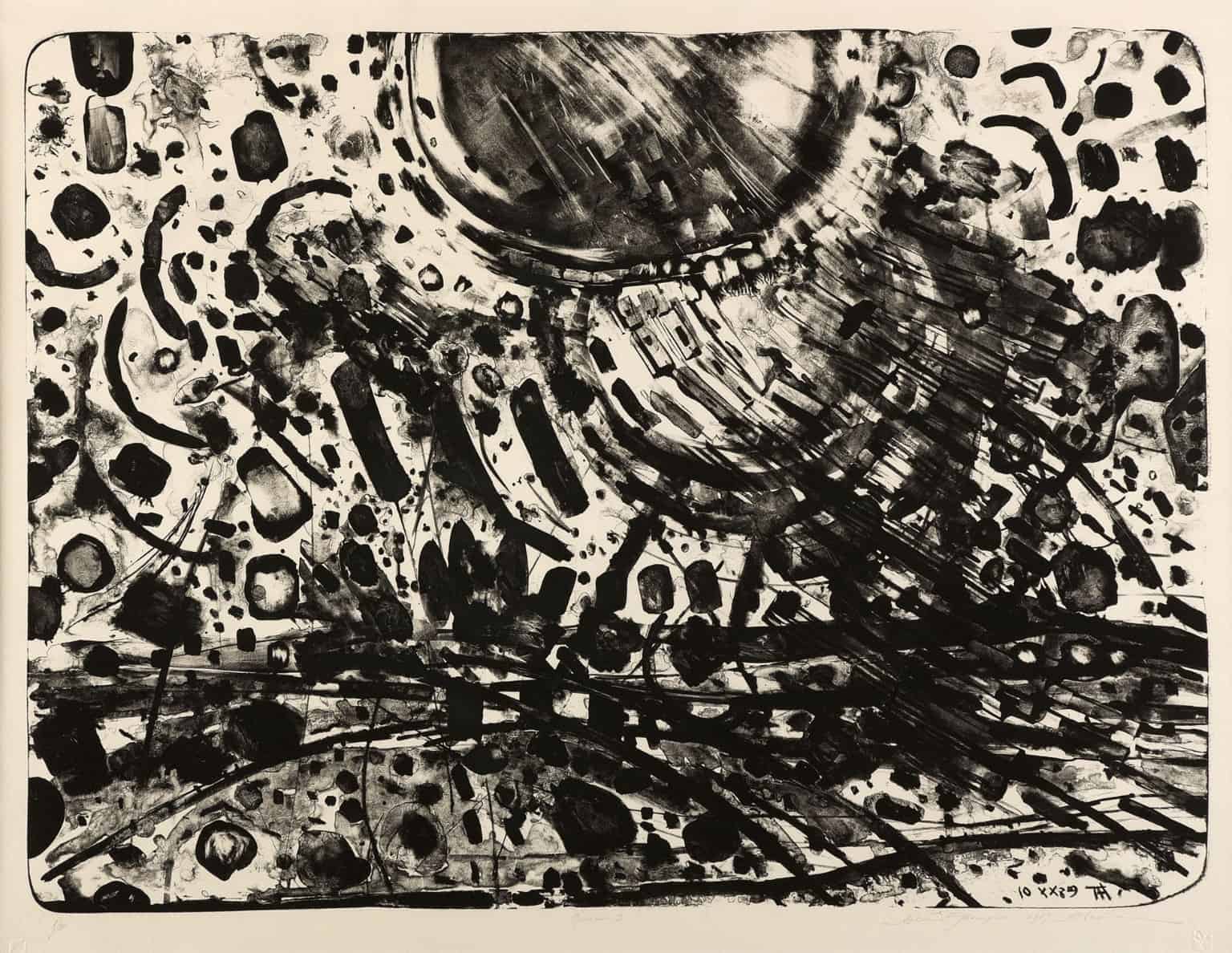
Quaver I
- Mildred Thompson (American, 1936-2003)
Mildred Thompson is an American artist who explored various genres of artmaking throughout her career spanning over four decades. Thompson was born in Jacksonville, Florida, in 1936. She began her formal training in art in 1956 at Howard University in Washington, D.C., where she studied under James A. Porter. After receiving her BFA at Howard, she went on to study at the Brooklyn Museum Art School in New York. Feeling ready for a change, Thompson moved to Germany to study at the Art Academy of Hamburg. This was a period of tremendous growth for her as an artist. At the academy, she was introduced to various printmaking techniques including lithography and etching, which would become an integral part of her artistic practice.
When Thompson returned to the United States in 1961, she faced much discrimination as a Black female artist. In Germany, she had found acceptance and felt free to create, but she encountered a different atmosphere in her home country. After struggling to find venues to show her work and gallery representation in the states, she returned to Germany where she was able to exhibit and sell her work. After 10 years in Germany, she returned to the United States in 1975 and found the social climate much improved. In 1986, after participating in artist residencies in Florida and Washington, she settled in Atlanta, Georgia, where she would spend the remainder of her life. During her years in Atlanta, Thompson taught at Agnes Scott College, Morehouse College, Spelman College and the Atlanta College of Art, and served as the associate editor of Art Papers.
Though Thompson began her career as a figurative painter, her work shifted to pure abstraction in the early 1970s. Unlike many of her contemporaries, Thompson shied away from addressing gender and race in her work in favor of exploring abstract theories and the mysteries of the universe. Quaver I, like much of her work, displays a predilection for mark-making. The lines almost dance as they interact with each other, creating a sense of movement. Thompson sought to give imagery to things that cannot be seen by the human eye, such as sound, time and space. Her works are imbued with a sense of chaos and mystery, paralleling the abstract concepts from which she drew inspiration.
